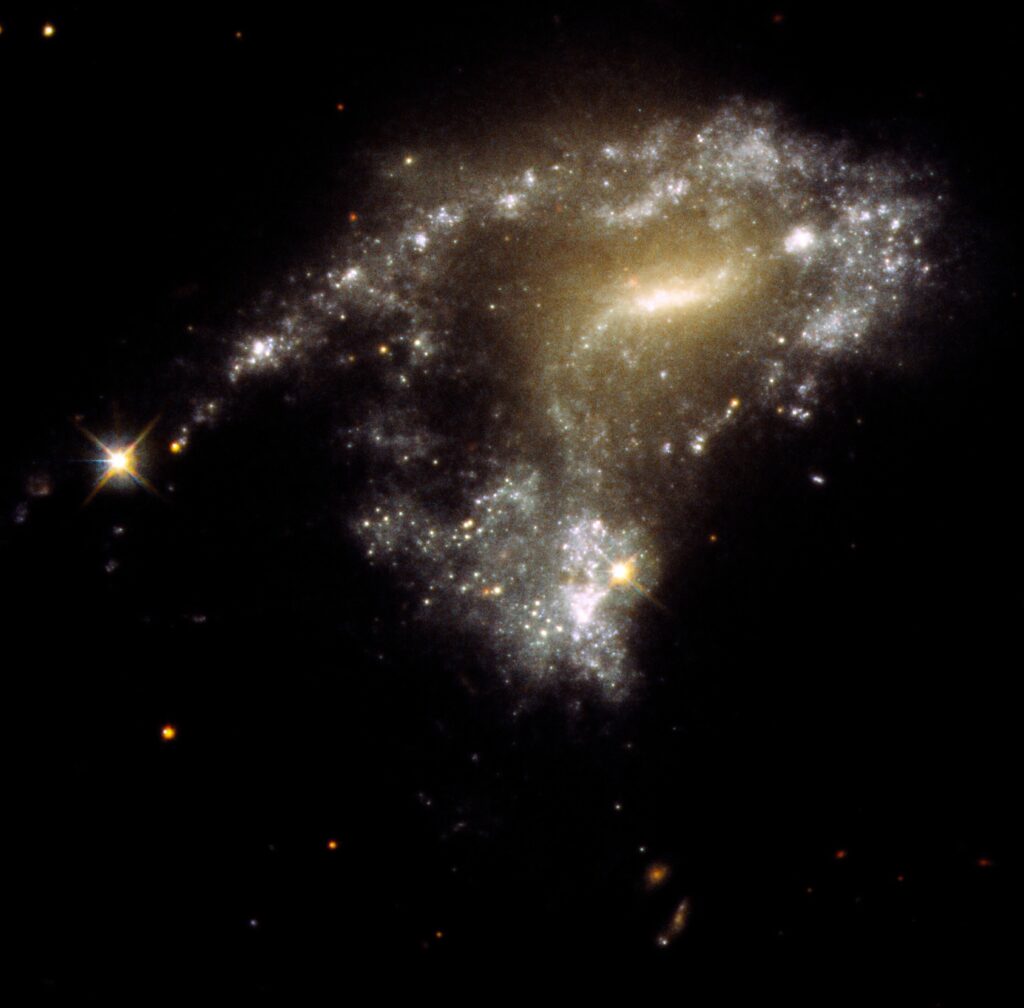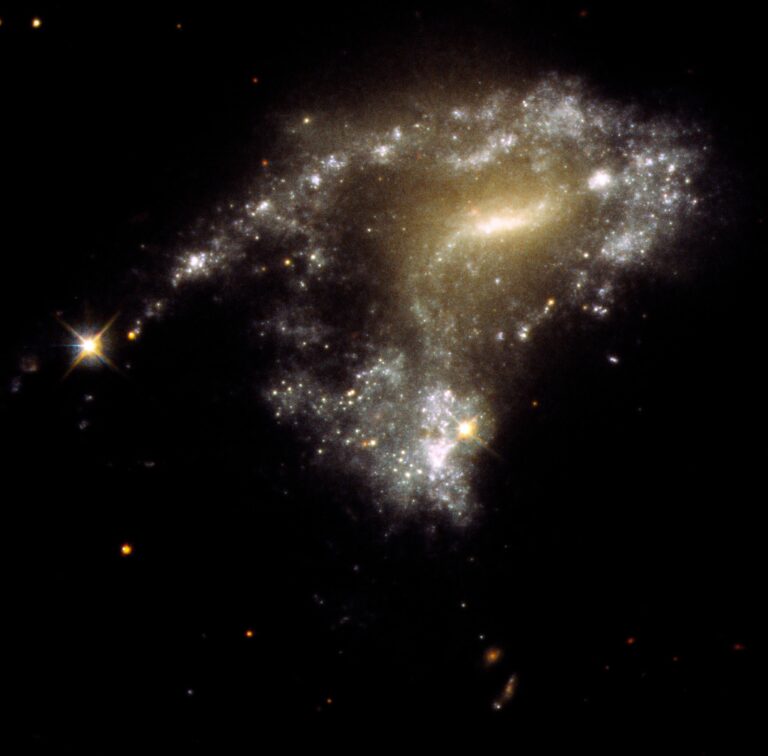Hubble Observes ‘String of Pearls’ Star Clusters Formed during Galaxy Collisions
Contrary to popular belief, the collision of galaxies does not result in the destruction of stars. On the contrary, these cosmic encounters actually stimulate the formation of new stars and potentially planets.
Recently, NASA’s Hubble Space Telescope has focused its attention on 12 galaxies that are in the process of interacting with one another. These galaxies exhibit elongated, tadpole-like tails composed of gas, dust, and a multitude of stars. Thanks to the remarkable precision and sensitivity of Hubble, scientists have identified 425 clusters of newly born stars along these tails, resembling dazzling strings of festive lights. Each cluster boasts an impressive number of approximately 1 million vibrant, blue newborn stars.
The existence of star clusters within tidal tails has been known for many years. When galaxies interact, the gravitational forces exerted on them cause the elongation of gas and dust, resulting in the formation of long, slender projections akin to fingers. Prominent examples of this phenomenon are the Antennae and Mice galaxies.
A team of astronomers meticulously analyzed a combination of fresh observations and archival data to determine the ages and masses of the star clusters within the tidal tails. Astonishingly, they discovered that these clusters are incredibly young, with an age of only 10 million years. Furthermore, these clusters appear to form consistently along the tails, which can stretch for thousands of light-years.
Lead author Michael Rodruck from Randolph-Macon College in Ashland, Virginia expressed his surprise at the abundance of young objects within the tails. He stated, “It provides valuable insights into the efficiency of cluster formation. The presence of tidal tails allows for the creation of new generations of stars that may not have otherwise come into existence.”
The appearance of these tails resembles the stretching of a spiral arm of a galaxy into the vastness of space. The outer regions of the arm are pulled and elongated, much like taffy, due to the gravitational forces exerted by the interacting galaxies engaged in a cosmic tug-of-war.

Prior to the mergers, the galaxies contained abundant dusty clouds of molecular hydrogen that may have remained inactive. However, these clouds were disturbed and collided with each other during the encounters. As a result, the hydrogen was compressed to the extent that it triggered a burst of star formation.
The future of these elongated star clusters is uncertain. They could potentially remain gravitationally bound and transform into globular star clusters, similar to the ones found outside the plane of our Milky Way galaxy. Alternatively, they might disperse and form a halo of stars surrounding their host galaxy, or even be expelled to become intergalactic stars that wander between galaxies.
This formation of star clusters resembling a string of pearls may have been more prevalent in the early universe, when galaxies collided more frequently. The nearby galaxies observed by the Hubble Space Telescope serve as a representation of events that occurred in the distant past, making them valuable laboratories for studying the history of the universe.
Provided by ESA/Hubble Information Centre.
This article is republished from PhysORG under a Creative Commons license. Read the original article.
Do not forget to share your opinion with us to provide you with the best posts !




0 Comments